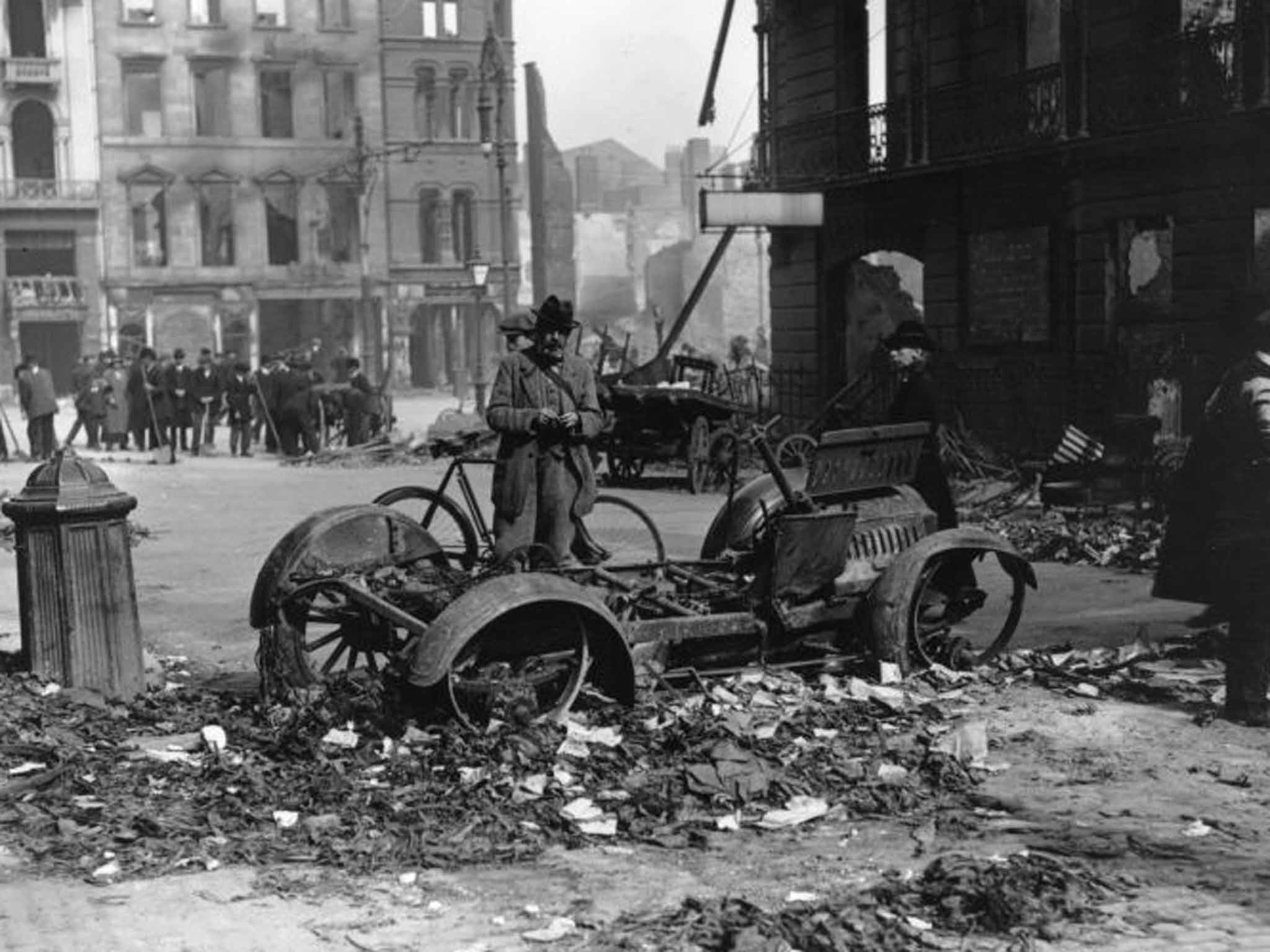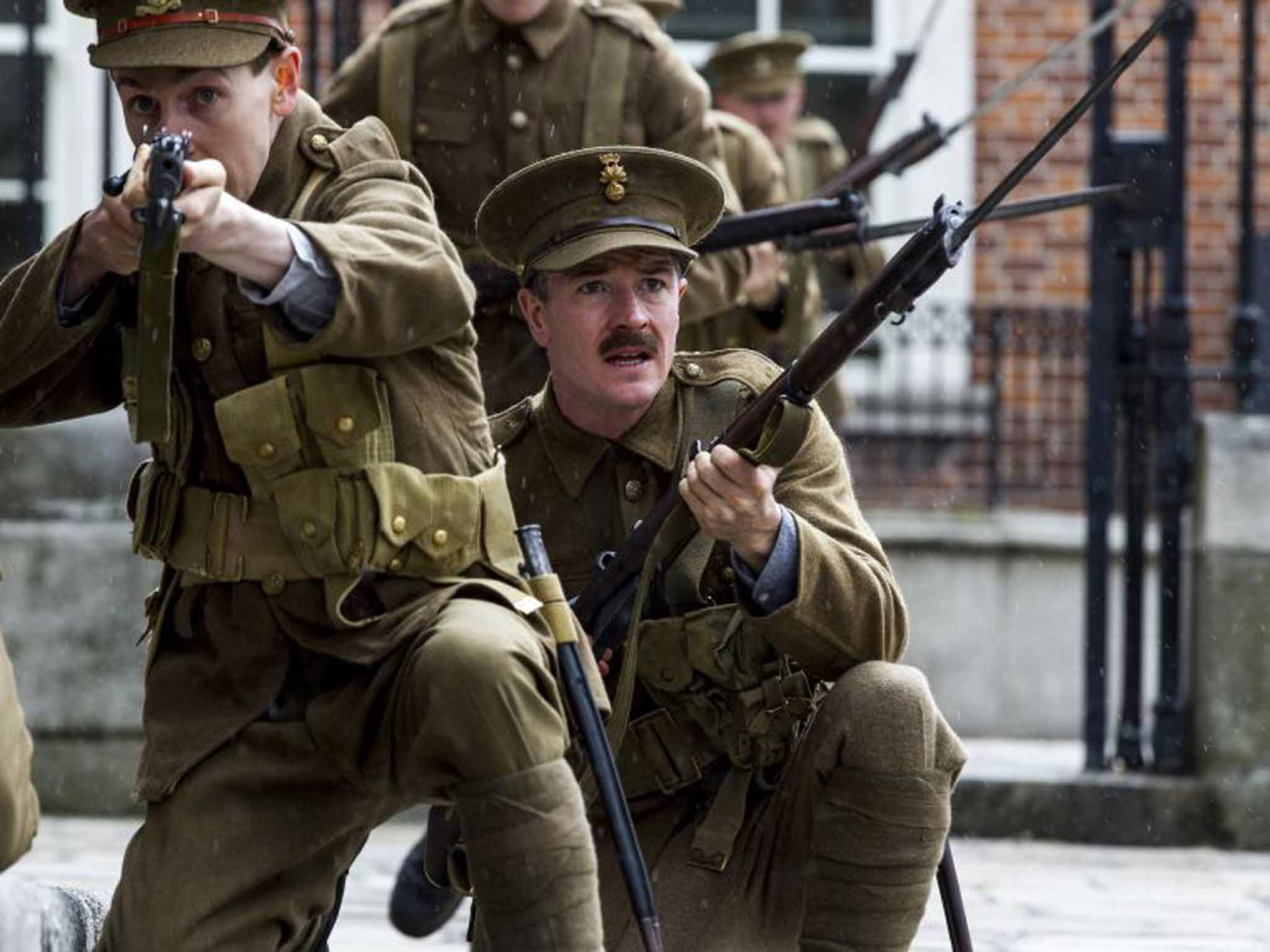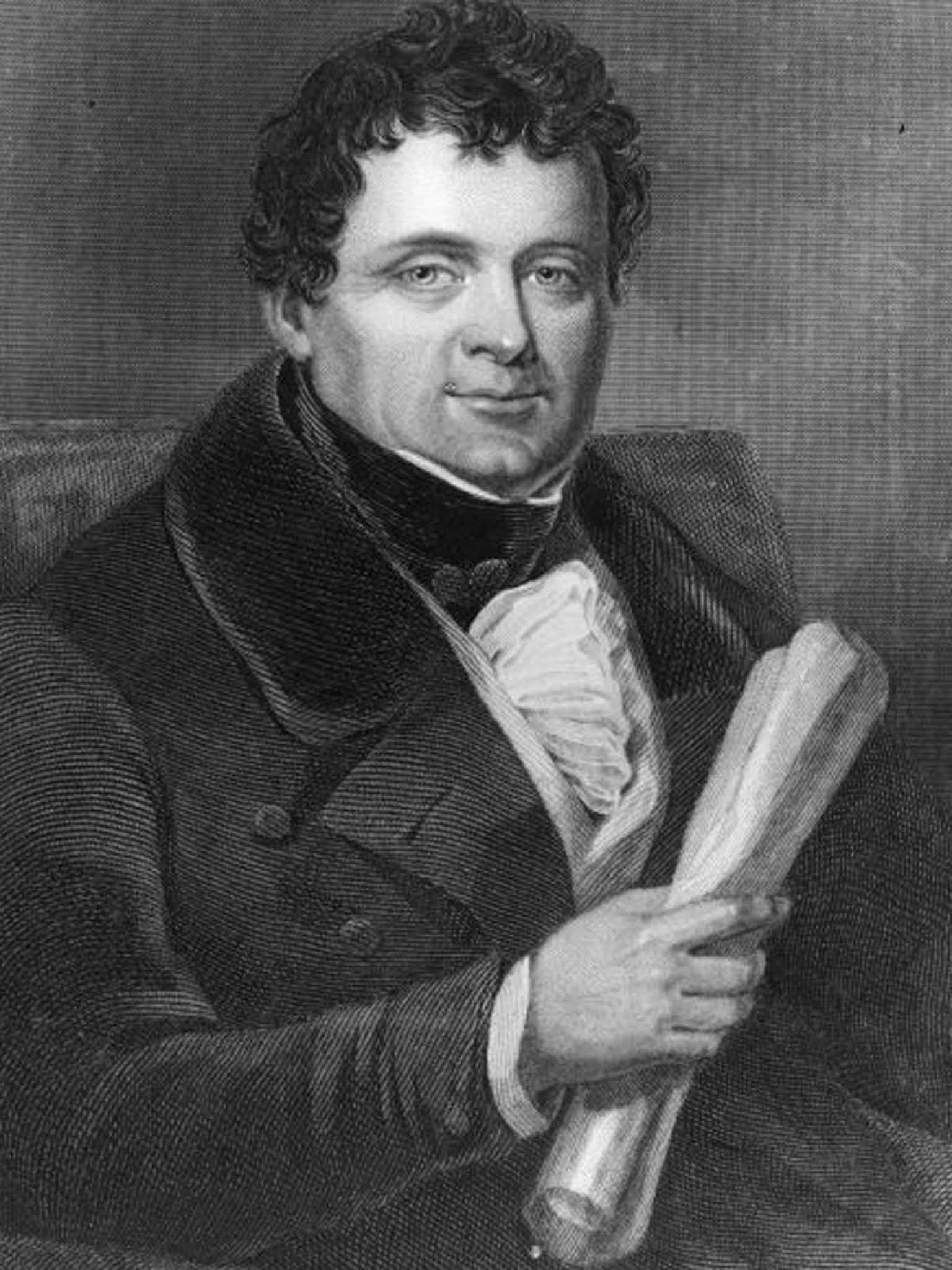Ireland's Easter Rising and how history is being twisted in celebrating the struggle for independence
Ireland has begun centenary celebrations, starting with the Easter Rising of 1916 and ending with the consolidation of the 'free state' in 1923

Your support helps us to tell the story
From reproductive rights to climate change to Big Tech, The Independent is on the ground when the story is developing. Whether it's investigating the financials of Elon Musk's pro-Trump PAC or producing our latest documentary, 'The A Word', which shines a light on the American women fighting for reproductive rights, we know how important it is to parse out the facts from the messaging.
At such a critical moment in US history, we need reporters on the ground. Your donation allows us to keep sending journalists to speak to both sides of the story.
The Independent is trusted by Americans across the entire political spectrum. And unlike many other quality news outlets, we choose not to lock Americans out of our reporting and analysis with paywalls. We believe quality journalism should be available to everyone, paid for by those who can afford it.
Your support makes all the difference.If you drive towards the Liffey down O'Connell Street in Dublin – which was Sackville Street then – you'll find a small memento of the 1916‑23 "Irish Revolution", as we are now enjoined to call those brilliant, terrifying, tragic years of Ireland's history. It's a bullet hole in the right breast of the angel – the one looking north-east towards what was Clery's department store – that would have killed the poor old girl had she been made of flesh and blood rather than bronze. She is one of the four winged victories around the statue of Daniel O'Connell (1775-1847) which supposedly represent each of the Great Liberator's four virtues: courage, eloquence, fidelity and patriotism.
No one is quite sure whether the Brits or the Irish Volunteers of 1916 shot the angel 100 years ago. Or whether she fell victim to the grimmer and far less romantic civil war battle in the same street between the new Irish National Army and the men who rejected the 1921 Anglo-Irish Treaty which gave Ireland the illusion of independence. But O'Connell and his four guardian angels were fitting witnesses to the lives and deaths of those who shaped the beautiful, imperfect, clerical, circumscribed and un-British part of Ireland that emerged from a cruel and fratricidal war.
That's where the "revolution" comes in. Ireland has just begun celebrating the 1916 bit, when 1,200 men under the command of Padraig Pearse stormed the general post office and other Dublin landmarks on Easter Monday, 24 April. A Gaelic scholar, schoolteacher, patriot, pseudo-fascist, poet, believer in the idea of blood sacrifice and certainly a very brave – if not suicidal – man, the Irish are this centenary still debating the good and bad of this ethereal figure and his colleagues in rebellion. Seven men signed a declaration – Pearse appeared in the third row of names – which was pasted to the wall of the post office under the title of "The Provisional Government of the Irish Republic" and addressed to "The People of Ireland".
It's tempting to say this was Ireland's Magna Carta – though it was nothing of the kind – and that "celebrating" it comes easy when we're all addicted to centenaries. There are to be military parades and flypasts and a 21-gun salute in Dublin on Easter Monday and the whole shebang has already kicked off with a flag-raising ceremony at Dublin Castle, once the seat of British rule, at which the names of the 1916 dead republicans were read out – minus those of the civilians who also lost their lives, 40 of them children. There's a new visitor centre in the post office itself, and the national broadcaster, RTE, is airing an expensive five-part epic serial called Rebellion – it's got some great action sequences, fine acting, a plonking screenplay, and a lot of reality; episode two contains the brutal execution of a protesting woman by a republican soldier. Visit a Dublin bookshop and you'll be met, not by shelves of 1916-23 histories but by libraries of them, mostly first-class academic work, by mass reproductions of 1916 newspapers, even greetings cards adorned with contemporary photographs of grim-faced British troops leading away even grimmer-faced Irish rebels to imprisonment or worse. Having a great time, wish you were here.

Yes, there's a holiday air about the whole thing, rather like the 1916 Easter Monday, when most people in Sackville Street didn't pay much attention to the schoolteacher in the odd Boer hat reading his tract aloud on the steps of the post office. Ireland's Heritage Minister promises a "respectful and inclusive commemoration" – which means the Protestants will not be forgotten. Mercifully, the British Royal Family will be. The crazed idea that Prince Charles would be invited to Dublin to commemorate his great-grandfather's butchery – of the 15 Irishmen shot by firing squad after the Easter Rising and of the 254 civilians (more than half the total casualties, most of them killed by Crown forces, in the six days of the rebellion) – has been discreetly abandoned; the Brits may be quietly asked to attend a Somme ceremony instead.
Arlene Foster, the Protestant Democratic Unionist who will become first minister of Northern Ireland next month, at first prissily declined to attend any 1916 ceremonies, but then announced that she might attend a "symposium" on the subject, which would presumably be boring enough to attract little political attention. But in the Republic itself, as long ago as 1966 – on the 50th anniversary of the Rising, when it was still a very Church-bound Catholic nation – young men and women were already sickened by the clerical and republican political fawning over the untouchable heroes of 1916. On a visit to Dublin in the late Seventies, the brother of a journalist friend of mine dumped his school books on my lap one evening with the imperishable command: "Look at what the gob-shites made us read!" Sure enough, each of his "history" books would end in 1921 – with the victory of the War of Independence against Britain, thus deleting the 1922-23 civil war – and treated Pearse as a saint-in-waiting. Could the Irish have been so gullible? Sure enough, I took out one of the man's old schoolbooks again and there was James Carty's A Junior History of Ireland (1959), in which Pearse is "one of the noblest characters in Irish history".

But back to the real 1916. The first paragraph of the Easter declaration was a political winner – until you started thinking about it. "In the name of God and of the dead generations from which she receives her old tradition of nationhood," it said. "Ireland, through us, summons her children to her flag and strikes for her freedom." The problem lay in the expression "through us" – not because the Irish signatories doubted it, but because no one had elected them to stage this romantic, bloody and ultimately hopeless military operation against the British on behalf of the "sovereign independent state" which they had declared. Unlike the constitutionalist O'Connell, whose Irish emancipation was achieved through the British parliament 87 years earlier, the Easter Rising was more of a "putsch" than a revolution, an attempted coup that had absolutely no democratic credentials. Although, as one letter-writer to The Irish Times asked last month, where did the British authorities obtain their mandate to govern Ireland?
The "killer" came in the second paragraph of the declaration in which Thomas Clarke, Sean Mac Diarmada, PH [Padraig Henry] Pearse, James Connolly, Thomas MacDonagh, Eamonn Ceannt and Joseph Plunkett claimed that they were supported by Ireland's exiled children in America "and by gallant allies in Europe". This was a killer paragraph in every sense of the word. For the "gallant allies" were the Kaiser's armies, which were at that very moment slaughtering British soldiers in the titanic war in France and Flanders. While the British, along with 80,000 Irishmen in British uniform, fought the Germans who had invaded "little Catholic Belgium" in 1914, Pearse and his friends – and not all of his comrades were his friends – were fighting for little Catholic Ireland on the side of Britain's enemy.
If its creators had not declared for Germany, the British might have been able to brush the Rising aside as a violent but hot-headed local rebellion. But for a British government facing the German onslaught in 1916, this was an act of gross treachery, one that would inevitably provide Pearse with the blood sacrifice of which he spoke so admiringly. History is about context, and statistics speak for themselves. In Britain's own "blood sacrifice" on the Somme less than three months after the Easter Rising, around 20,000 British troops died on the first day of the battle. An estimated 3,500 Irish soldiers were killed on the Somme, 2,000 from what is now Northern Ireland, 1,200 from what is now the Republic. In the Rising, only 485 were killed, more than half of them civilian men, women and children, and a mere 48 Irish rebels – a figure that did not appear in those Irish school history books I was handed with such derision all those years ago.
For the British Army at the time, the firing squads that put Pearse and his men to death were no different from those that executed British soldiers sentenced for cowardice in France. I was searching in the Public Record Office in London for the names of Chinese workers in France who were shot for murder by the British in the First World War – my father, alas, killed one of them as he tried to knife him. I found, sandwiched in the Great War military execution files for 1916, the names and death sentences of Pearse, Connolly and the rest. I remember my sense of shock when I touched those papers. Didn't the Brits realise, for heavens' sakes, who these men were? But no, to those contemporary British Army archivists, Pearse and Co were among the First World War dead, scarcely honoured of course, but just another casualty statistic.
For the same reason, I suppose, Irish Volunteer Lieutenant Michael Malone and section commander James Grace managed to cut down so many British troops at Mount Street Bridge in Dublin from their windows in 25 Northumberland Road. Twenty-eight British officers and men were killed and over 200 wounded; the British hurled themselves at the Irish ambush positions without any cover – just as they would have done so promiscuously in Flanders and on the Somme. Malone died fighting, Grace escaped and was later imprisoned. Their courage is now remembered on a plaque on the wall of the – miraculously – still standing house in Northumberland Road. Connolly, who was more interested in a socialist worker's republic than a mystical Gaelic Ireland, believed the British would never destroy the centre of Dublin. But this was the First World War and the British, who used heavy artillery, mortars and even a gunboat on the Liffey to level a square mile of central Dublin, were already extremely efficient at demolishing cities with shellfire.
Some Irish commentators have been declaring that the event to remember during this 1916-23 "revolution" should be the first meeting of the democratically elected Dail Eireann (Irish parliament) – held under British occupation – whose Irish members simply took the places to which they had been elected in the UK parliament and whose first session marked the 1919 start of the War of Independence against Britain. This would place Ireland's revolution on a constitutional – rather than violent – foundation. But a large number of members were in British prisons. So is the Second Dail perhaps the date to mark, 2 January 1922, when members passed the Anglo-Irish Treaty – after which the Sinn Fein party divided and the civil war began? It was to be the saddest and most brutal of modern Irish conflicts, with up to 4,000 dead, many of them former comrades-in-arms; the provisional government organised firing squads, and its soldiers – predecessors of the same army that now proudly wears the UN blue beret around the world – committed executions and a few war crimes. So did the anti-Treaty forces and their nominal leader, Eamon de Valera, who had narrowly escaped British execution in 1916.
Can tragedy be turned to epic? In an obvious way, the "heroes" of 1916, the fine socialist James Connolly – perhaps the sanest rebel of them all, who faced the firing squad on a stretcher, so terrible were his wounds – and the elder statesman Tom Clarke, who at 59 was the oldest to be executed, have acquired a unique niche in Irish history today. They fought against thousands of British soldiers, even when their struggle seemed lost. Perhaps they hold the same place – though in no other way, historically or politically – as "the Few" do in British hearts. They fought on alone. But there the parallel ends. The Irish "Few" were reviled by Church and people, cursed in Irish newspapers, blamed for the mass looting by the tens of thousands of Dublin poor who thronged the streets under fire to take those luxuries – new shoes, jackets, heaps of coal, sweets, even pianos – that they could never otherwise hope to possess. Only the brutality with which the Crown executed the leaders of 1916 – shot after secret (and thus illegal) courts-martial – turned public scorn at the rebels into outrage against the British.
But if Ireland's "Few" did not win victory in Easter 1916, they won the greater battle to de-anglicise Ireland – to free it from the idea that British overlordship was an acceptable and natural state of existence – and this, I suspect, is their real place in Irish and world history. I fear it always comes back to Pearse. In 1915, he wrote that national freedom, "like a divine religion", bears "the marks of unity, of sanctity, of Catholicity, of apostolic succession." That's plenty for Arlene Foster and the Prods of Belfast to "discourse" about. And if you can find Pearse's "blood sacrifice" echoed in Rupert Brooke's "swimmers into cleanness leaping", the Irish journalist Patsy McGarry has written that the 1916 Rising was "an immoral and anti-democratic act organised by a minority within a minority who, looking into their own souls, saw there what they deemed was right for the Irish people". McGarry didn't need to mention the Provisional IRA.
But there's no doubt where Ireland puts its money. When an original copy of the 1916 declaration was put up for auction four months ago, it made £305,000. When the dramatic order countermanding the Easter Rising from Eoin Mac Neill – which almost destroyed the rebellion by confining it largely to Dublin – was sold in 2014, it made only Sterling Pounds 22,000. But then, what do you expect when you're asked to buy a document that gloomily states: "Volunteers completely deceived. All orders for tomorrow, Sunday, are completely cancelled."
Yet the revolutionaries scarcely changed the foundations of Irish society. Constituency boundaries in the new "Eire" – it would not become a republic until 1948 – remained the old Westminster boundaries, Lord Mayors were still elected with their antique British chains of office. The "martyrs" of 1916 posthumously and predictably bestowed their names upon dank Irish railway stations, and the old British red post boxes were painted green – a surprising number of which are still around, with the British crown and below it the initial letters of George Rex, whose own vengeful military commander, General John Maxwell, signed the 1916 execution warrants and forbade the bodies to be given to their families.
Brits would do well to buy one or two of the fine books now published on the Rising. It would remind them that the Irish Volunteers, the Irish Republican Brotherhood and the Irish Citizen Army were the soldiers of 1916 – not the IRA, which did not then exist. They would read how shabbily post-independence Ireland treated the families and comrades (especially women) of the "martyrs"; and perhaps be moved by James Connolly's last words to his wife, Lillie, the night before he was to face the British firing squad. "Well, I suppose you know what this means," he said. And when Lillie said, "Not that, James, not that", he replied: "Yes, for the first time I dropped off to sleep. And they wakened me to tell me I was to be shot at dawn." Lillie burst out: "Your life, James, your beautiful life." And Connolly replied: "Well, Lillie, hasn't it been a full life, and isn't this a good end?"
While Pearse and his executed colleagues still lie in the quicklime with which the British Army covered them in 1916, it's no wonder Queen Elizabeth bowed her head at the Dublin Garden of Remembrance in honour of those who died at that time for Irish independence – a mercifully broad church (perhaps literally) of bold fighters, ex-felons, assassins and ruthless men such as Michael Collins, the 1916 veteran and later IRA intelligence officer and minister for finance, whose hand, as Churchill put it, "had touched directly the springs of terrible deeds". Yet Ireland has proved to be one of the few countries in Europe to maintain a continuous democracy for 100 years. Perhaps that's where O'Connell's courage, eloquence, fidelity and patriotism come in.
Join our commenting forum
Join thought-provoking conversations, follow other Independent readers and see their replies
Comments